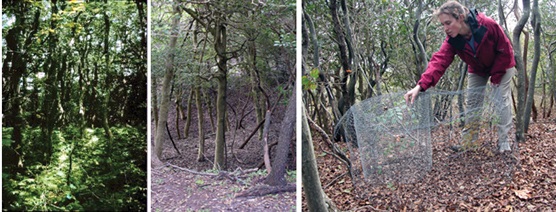
One of the earliest reports on the vegetation of Fire Island's Sunken Forest was provided by Robert Cushman Murphy in his 1933 article for Natural History Magazine, August on Fire Island Beach. In 1953, Oakleigh Thorne, II, provided additional documentation of vegetation in The Sunken Forest of Fire Island Beach, N.Y., his master's thesis for Yale University. Thorne documented the preservation and establishment of the Sunken Forest Preserve, which became a major component of Fire Island National Seashore when the park was established in 1964.
In 1967, the National Park Service established permanent vegetation plots in the Sunken Forest to measure long-term changes. These plots were resurveyed in 1986, 2002, 2011, and 2015.
More than forty years of vegetation studies in Fire Island's Sunken Forest reveal an alarming reduction in the number of herbaceous and woody plants in the understory of this globally rare maritime holly forest. Scientists are concerned that the climax forest is no longer able to sustain itself. Canopy trees such as the old growth American holly and sassafras, shadblow and black gum are no longer found growing in the understory at densities high enough to support regeneration of this maritime forest.
Last updated: January 18, 2017
